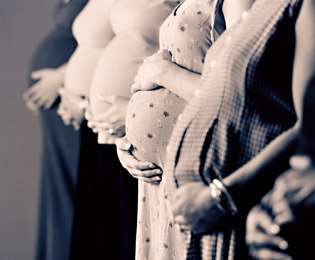ONE LIFE FOR ANOTHER

BY ANNIKA JONKER – Giving birth to a child is one of the most dangerous things a women can do.
Throughout history, it remains one of the most  prevalent ways that pregnant women die. Every day, according to the World Health Organization, about 830 women pass away all around the world due to pregnancy or childbirth complications, this cause of death is called a “maternal death.” Throughout the 1700s, the estimated death rate due to pregnancy was around 1.5%. In the 20th century, the maternal death rate was 0.6%, and this has drastically improved to 0.026% in the 21st century within the United States. A 0.026% maternal mortality rates means 26.4 deaths out of 100,000 live births. Although this number does not look threatening, since 2000, the maternal mortality in 48 states within the U.S. has increased by 27% and in Texas, maternal mortality has increased by almost 50%. The most shocking fact is that the United States, one of the world’s leading developing countries, notorious for advanced medical treatments, has one of the worst maternal mortality rates in the developed world. But why?
prevalent ways that pregnant women die. Every day, according to the World Health Organization, about 830 women pass away all around the world due to pregnancy or childbirth complications, this cause of death is called a “maternal death.” Throughout the 1700s, the estimated death rate due to pregnancy was around 1.5%. In the 20th century, the maternal death rate was 0.6%, and this has drastically improved to 0.026% in the 21st century within the United States. A 0.026% maternal mortality rates means 26.4 deaths out of 100,000 live births. Although this number does not look threatening, since 2000, the maternal mortality in 48 states within the U.S. has increased by 27% and in Texas, maternal mortality has increased by almost 50%. The most shocking fact is that the United States, one of the world’s leading developing countries, notorious for advanced medical treatments, has one of the worst maternal mortality rates in the developed world. But why?
It is no secret that bearing a child demands a tremendous amount of time and energy from the mother. By the time that she has reached full-term, her energy stores and metabolism cannot sustain pregnancy for much longer. This causes the mother’s immune system to be compromised, placing her at an increased risk for infection. In the past, the single most common cause of death during childbirth was due to what is called “puerperal fever,” which is a severe fever during childbirth that often causes sepsis and death after giving birth to the child. Even if the mother did not die the day of her child’s delivery, her fever would worsen and kill her within a few days of childbirth. Today we recognize that this fever is caused by a bacterial infection of the uterus or genital tract, something we can easily treat in the 21st century. Throughout history, other common complications that lead to maternal mortality included hemorrhage, eclampsia, and obstructed labor, but these remain common complications even to this day. Researchers are theorizing that there has been an increase in maternal mortality in the 21st century because, not only are women suffering childbirth complications that have been constant throughout history, but women are now facing new problems that are increasing their risk for maternal mortality. For one, in the last few years, there has been an increase in cardiac disease and diabetes prevalence among the American population. This has lead to an increase in heart failure during childbirth, particularly in African American women. Secondly, there is a disparity within the United States between those who have health insurance and those who do not. According to the World Health Organization, within the United States, a women is three times more likely to die from a pregnancy-related complication if she is uninsured compared to pregnant women who are insured. A possible explanation for this is that uninsured pregnant women are not always able to afford an obstetrician and gynecologist with whom they can discuss their pregnancy journey and chronic conditions with. Both of these are novel aspects to childbirth that was not present in the past and that place a women at an increased risk for maternal death.
But don’t panic! Even though the United States has the highest maternal mortality rate in the developed world, it is aware of this increasing problem and is on the road to finding a solution. The World Health Organization outlines in their Sustainable Development Goals that they hope to decrease maternal mortality rate to 0.07% between 2016 and 2030 worldwide. In addition, the 2010 Affordable Care Act has antenatal and maternal health benefits that insurance plans must cover. There is a movement across America to increase maternal mortality awareness and to extend pregnancy-related insurance coverage to low income women.
